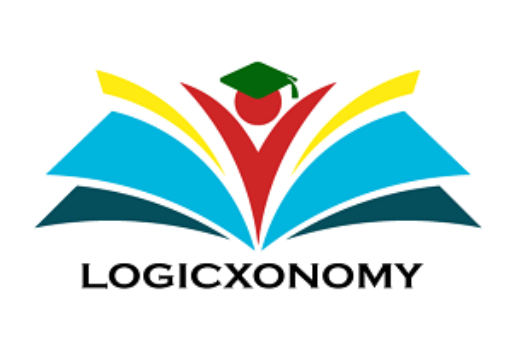Cubes and Dice problems in Logical Reasoning play a pivotal role in competitive examinations. These intriguing puzzles test one’s spatial intelligence and ability to visualize patterns. With a set of cubes or dice, candidates are challenged to determine the outcome of various rotations or rearrangements. Here we are going to solve 15 challenging problems that will push your logical reasoning abilities to the limit.
Cubes and Dice MCQ
Que 1: How many dots are there on the dice face opposite the one with three dots?

(a) 2
(b) 4
(c) 5
(d) 6
Solution: Choose 1st and 4th (Cubes and Dice)
3⇒6,4 (Clockwise)
3⇒1,2
This means that 5 is the opposite of 3.
Option (c) is correct.
Que 2: Choose the box that is similar to the box formed from the given sheet of paper (X).

(a) 1 and 4 only
(b) 3 and 4 only
(c) 1 and 2 only
(d) 2 and 3 only
Solution: A white V shape will form from the darker area. (Cubes and Dice)
White⇒White
White⇒Shaded
White⇒Shaded
Option (a) is correct.
Que 3: What number is opposite to 3 ?

(a) 1
(b) 4
(c) 6
(d) 2
Solution: Choose dice B and C (Cubes and Dice)
6⇒4,1 (Clockwise)
6⇒5,2
This means that 6 is the opposite of 3.
Option (c) is correct.
Que 4: Four positions of a dice are given below. Identify the number at the bottom when the top is 3?

(a) 5
(b) 1
(c) 2
(d) 6
Solution: Choose 1st and 2nd
3⇒6,2 (Clockwise)
3⇒1,4
This means that 5 is the opposite of 3. (Cubes and Dice)
Option (a) is correct.

Que 5:Choose the box that is similar to the box formed from the given sheet of paper (X).

(a) 1, 2 and 3 only
(b) 2 and 3 only
(c) 1, 3 and 4 only
(d) 2, 3 and 4 only
Solution: Both D face same direction (Cubes and Dice)
White⇒White
White⇒Square
White⇒Design
Option (d) is correct.
Que 6: Choose the box that is similar to the box formed from the given sheet of paper (X).

(a) 1 and 3 only
(b) 2 and 4 only
(c) 3 and 4 only
(d) 1 and 4 only
Solution: White Rectangle⇒White Rectangle (Cubes and Dice)
Black Rectangle⇒Black Rectangle
White Square⇒Black Square
Option (a) is correct.
Que 7: What is the total of the faces touching the ground when four dice are thrown on the ground and the total of numbers on the top faces is 13, with the top faces showing 4, 3, 1, and 5, respectively?
(a) 12
(b) 13
(c) 15
(d) Cannot be determined
Solution: (7-4)+(7-3)+(7-1)+(7-5)= 15
Option (c) is correct.
Que 8: Which of the following patterns can be formed from the piece of cardboard (X) as shown below?

(a) 4
(b) 2
(c) 1
(d) 3
Solution: Figure (2) is eliminated because black mark is on the right side instead of the left. (Cubes and Dice)
Figure (3) and (4) eliminated because black marks are present on smaller rectangles.
Option (c) is correct.
Que 9: How many smaller cubes, with side length 25 cm, obtained by cutting a larger cube with a side length of 125 cm, will have at least two faces painted red?
(a) 48
(b) 44
(c) 52
(d) 40
Solution: Two faces coloured⇒ 3×12 Edges=36
Three faces coloured⇒ 8 corners
Total= 36+8=44
Option (b) is correct.
Que 10: A cube, whose two adjacent faces are coloured, is cut into 64 identical small cubes. How Many of these small cubes are not coloured at all?
(a) 32
(b) 16
(c) 48
(d) 36
Solution: It’s 4×4 cube
New cube with all sides uncolored⇒3×3×4=36
Option (d) is correct.
Directions (Que 11-14): Read the following information and answer the questions based on it.
(i) The length, breadth and height of a rectangular piece of wood are 4 cm, 3 cm and 5 cm respectively.
(ii) Opposite sides of the 5 cm×4 cm piece are coloured in red.
(iii) Opposite sides of 4 cm×3 cm are coloured in blue.
(iv) Rest sides of 5 cm×3 cm are coloured in green on both sides.
(v) Now the piece is cut in such a way that cubes of 1 cm × 1 cm × 1 cm will be made.
Que 11: How many cubes will have all the three colours?
(a) 8
(b) 10
(c) 12
(d) 14
Solution: 8 corners (Cubes and Dice)
Option (a) is correct.
Que 12: How many cubes will not have any colour?
(a) 4
(b) 2
(c) 6
(d) 8
Solution: (4-2)×(3-2)×(5-2)=6
Option (c) is correct.
Que 13: How many cubes will have only two colours red and green on their two sides?
(a) 8
(b) 12
(c) 16
(d) 20
Solution: (5-2)×4 Edges=12
Option (b) is correct.
Que 14: How many cubes will have only one colour?
(a) 12
(b) 16
(c) 22
(d) 28
Solution: (4-2)×(5-2)×2=12
(5-2)×(3-2)×2=6
(4-2)×(3-2)×2=4
Total=12+6+4=22
Option (c) is correct.
Que 15: Six squares are coloured, front and back, red (R), blue (B), yellow (Y), green (G), white (W) and orange (0) and are hinged together as shown in the figure given below. If they are folded to form a cube, what would be the face opposite the white face?

(a) R
(b) G
(c) B
(d) O
Solution: G⇒O
B⇒W
R⇒Y
Option (c) is correct.
Syllogism Problems with Solutions: Click Here
